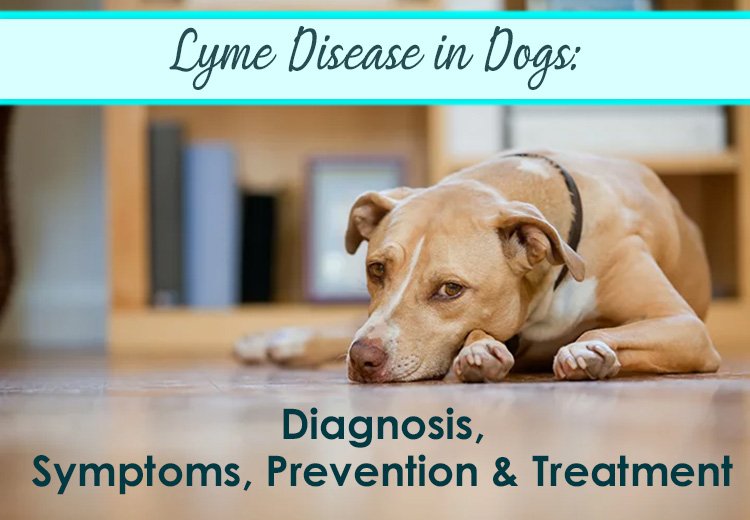Feb 28, 2023

One of the most widespread infections around the globe transmitted by ticks is Lyme disease. An infected tick bite is what causes Lyme disease in dogs. The bacterium spreads to several body regions. Then, certain organs or regions, such as joints, start to be affected.
Dogs, humans, and other animals are all susceptible to this sickness. It's crucial to treat your dog if they exhibit Lyme disease symptoms. Lyme disease can seriously affect your dog's health if it is not addressed.
Read on to learn more about Lyme disease in dogs and how you can treat or prevent it.
Specific types of infected ticks can transmit Lyme disease, also known as Lyme borreliosis, a bacterial ailment, to people, dogs, and other animals.
Since ticks are unable to fly or jump, they approach their host by lurking on the tops of bushes or tall grass, where they wait for your dog to pass by before picking them up.
Then, in search of a place to bite, it creeps onto his body.
When a dog or a person is bitten by a tick carrying the spiral-shaped bacteria Borrelia burgdorferi, the virus is transmitted through circulation. Once the bacterium has entered the bloodstream, it can spread to many different parts of the body and cause sickness in general as well as problems with specific tissues or organs, including joints. After a tick has been connected to a dog for 24 to 48 hours, the infection starts spreading.
After reviewing your dog's symptoms, medical history, and test results, your veterinarian will make the diagnosis of Lyme disease. If your dog exhibits lameness and fever and there is a high prevalence of Lyme disease in the area, your veterinarian will likely suspect the disease. They will also take your dog's complete medical history and do various diagnostics, some of which may involve blood tests. It examines your dog's symptoms for other probable reasons and checks for tick antibodies. To check the fluid in your dog's joints, your vet might also perform a joint tap.
Dogs exposed to Lyme disease typically do not exhibit any symptoms for a few days. Some canines exhibit symptoms from weeks to months after being bitten.
The following are some typical signs of Lyme disease in dogs:
The good news is that your dog's Lyme disease can be cured with a proper course of treatment. So, if your pet is infected, treating them isn't too difficult. A yearly test to check for Lyme disease in your dog may be advised by your veterinarian.
It's true that ticks are more common in the woods than you may assume. They may, however, be present in suburban backyards. To reduce their hiding areas, keep your grass short-mown and your bushes trimmed back. Ticks love long grass and shrubbery.
Your veterinarian might recommend Bravecto, a three-month tick prevention product. Ticks and fleas are killed for three months. There are also topical Vectra 3D and monthly oral chewable like Credelio.
Moreover, give your dog a thorough inspection as well when you get home from a walk, especially if you took your dog close to grass or bushes where ticks like to hide. Ask your vet about a yearly vaccination protecting against Lyme disease or year-round tick protection if your dog enjoys going on walks or leads a lifestyle where their exposure may be increased.
If neglected, canine Lyme disease can cause major health problems. You can take precautions to avoid infection, such as getting vaccinated against the disease and enhancing your dog‘s defenses using tick prevention measures. Fortunately, the condition can be treated with antibiotics and painkillers if it is detected earlier.
Sep 11, 2024
Our furry friends are our best and most loyal companions. And being a responsible pet parent, you should protect them against harmful paras...
Aug 22, 2024
Every pet parent’s priority is to keep their furry friends protected from parasites such as fleas and ticks as they are harmful pests...